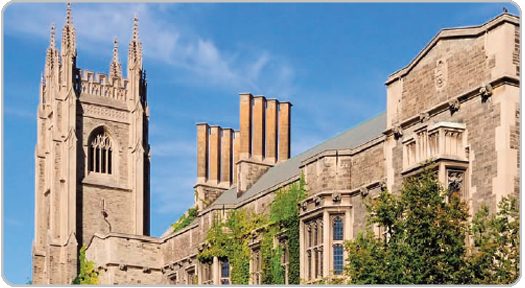PCSC Technology Among Honeywell’s Major Security Overhaul –
 The University of Toronto, one of the largest universities in North America, is keeping its three campuses safe and secure with a new, integrated security system – technology bolstered by comprehensive maintenance and service. Covering three campuses with a combined 200 facilities that serve more than 70,000 students and nearly 14,000 faculty and staff members.
The University of Toronto, one of the largest universities in North America, is keeping its three campuses safe and secure with a new, integrated security system – technology bolstered by comprehensive maintenance and service. Covering three campuses with a combined 200 facilities that serve more than 70,000 students and nearly 14,000 faculty and staff members.
Many of the university’s buildings date back to the 1820s. And, until recently, its security systems were also firmly rooted in the past. Individual facilities and departments took different approaches to security–and used different vendors–creating a disparate environment.
This, coupled with the university’s size, made improving security a significant challenge. “We needed a common security platform and process for responding to and maintaining alarms and security equipment,” said Dan Hutt, Director, Campus Police Services at University of Toronto.
The facility’s access control system initially comprised of PCSC’s legacy MicroLPM controllers. After many long years of service, the system was in need of upgrade to support the continued growth. Migration to PCSC’s IQ Series access control panels was the logical decision in this upgrade path.
Today, the system is being upgraded once more in an effort to take advantage of the latest in IP access solutions. PCSC’s patented Fault Tolerant (FT) controllers will be installed utilizing IP and PoE technologies. PCSC’s FT controllers provide the highest level of reliability with an automated process of system recovery for access control, alarm monitoring and output control systems.
Major Overhaul
The university began a security overhaul in 2002, sparked by both the police department’s move to a newer building and the university’s desire to update its parking garage monitoring system. The police department also sought to establish a centralized monitoring system in place of the previous localized methods.
The university chose Honeywell to help create a more uniform approach to safety and security. First, the university installed Honeywell Enterprise Buildings Integrator (EBI), a management platform that integrates core building functions. EBI, the backbone of the new security system, is managed by the police services department from a central technology hub.
The university also installed a Digital Video Manager, a digital surveillance system (DVM). The DVM converts analog camera signals to digital feeds, eliminating the need for video tapes. The system includes 246 surveillance cameras on campus.
The integrated security system also includes approximately 572 card readers that regulate entry into specific areas on two of the university’s campuses. The readers are integrated with DVM and tied into EBI, serving as “trigger points” for alarms and surveillance updates. The system includes live video of specific locations, along with floor plans and maps, allowing campus police to isolate alarm sources and respond to issues more efficiently.
The system allows university police to view and manage all alarm signals internally, reducing response
time from hours to minutes. The system provides the flexibility and specificity necessary to match different
building requirements. Some buildings use access control for after-hours access only, while other buildings have more stringent control measures.
Path Forward
Currently, 40 percent of University of Toronto facilities are on the Honeywell platform. All new construction and major renovation work includes the installation of additional cameras and card readers, and the university plans to incorporate all existing buildings onto the security system.
“We’ve made significant strides in modernizing security and we plan to continue moving forward based on the results,” Hutt said.





